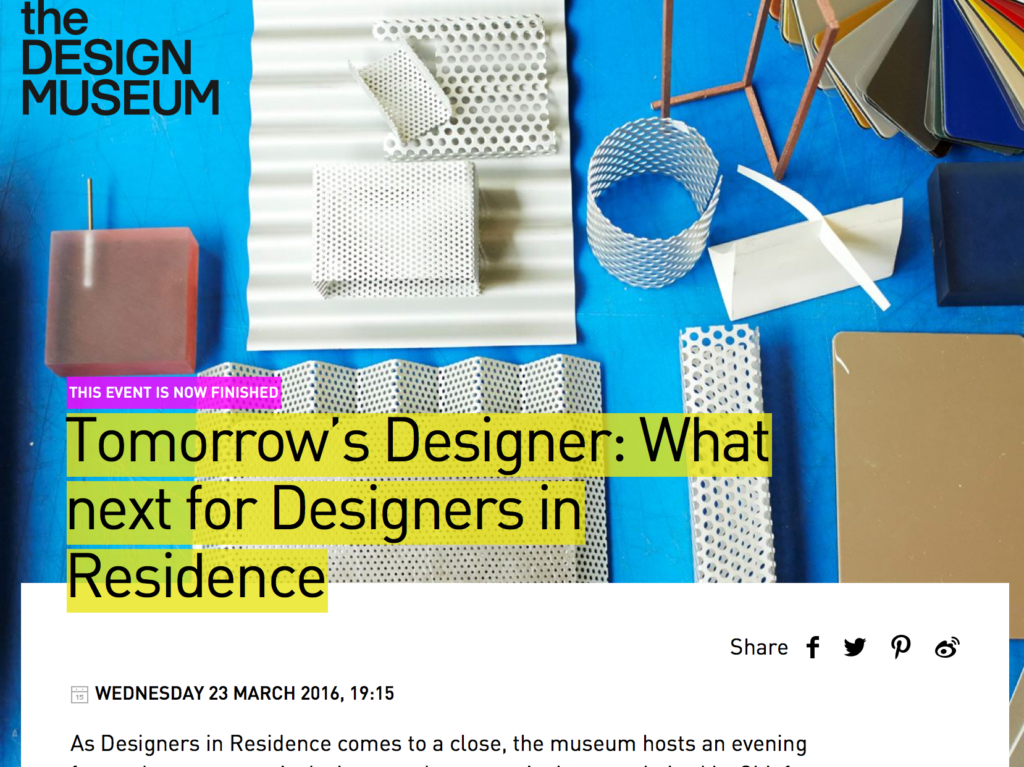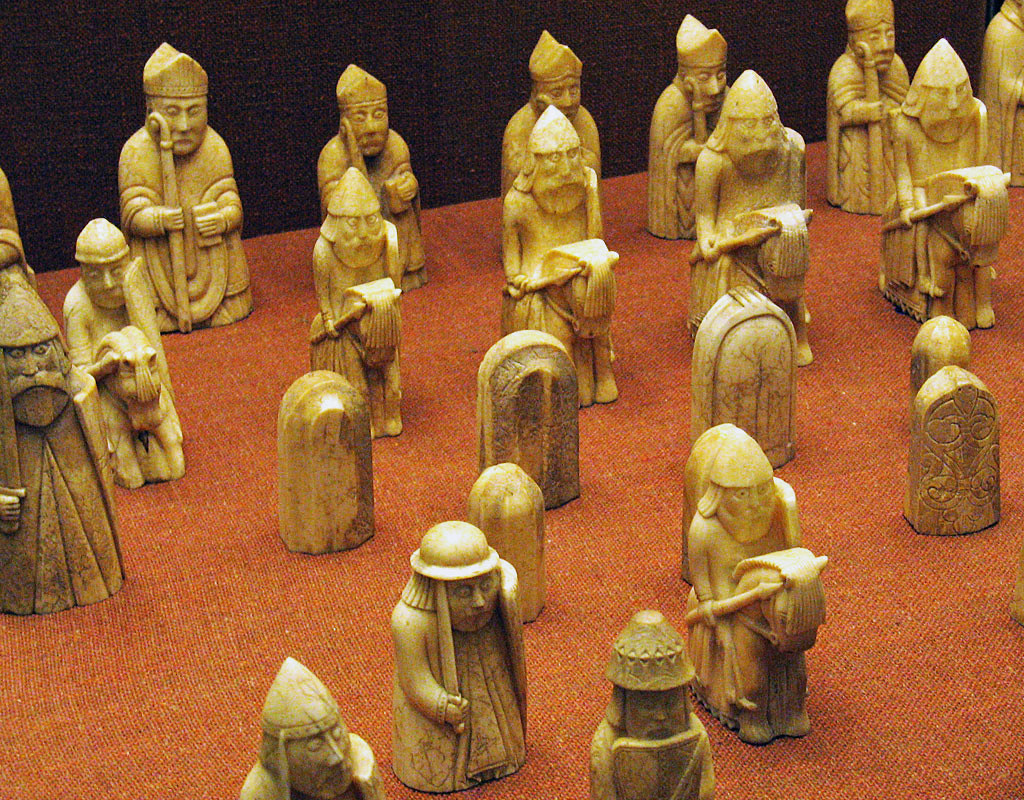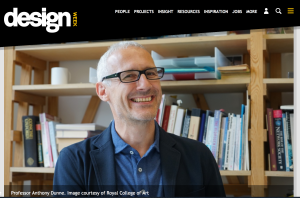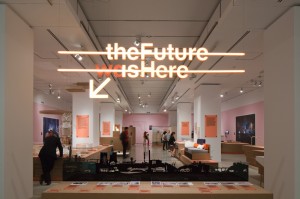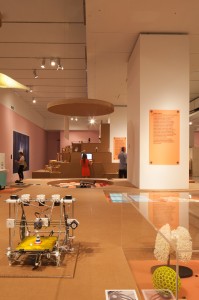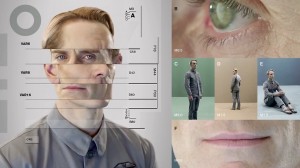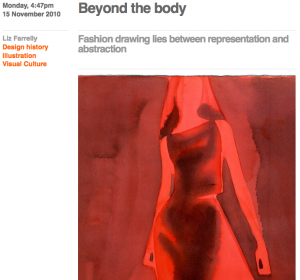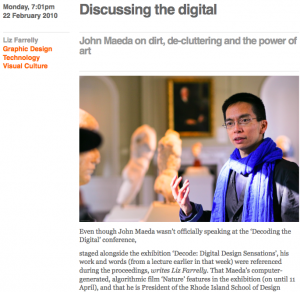The Future Starts Here
Victoria and Albert Museum
Exhibition Road, London SW7
12 May to 4 November 2018
Symposium, “A Toolkit for the Future”, 29 June 2018
I’m a little tired of the future, perhaps because my doctoral research requires me to think about “the future of design museums”, but also I’m old enough to recall another time when the future was centre stage; back when we worried that the Millennium might put a bug in it I edited a book with “future” in the title.* Contextualising our current future obsession (see Nesta’s Future Fest) I teach a semester of Cultural and Critical Studies lectures and seminars to Visual Communication students at University of Brighton, “Visions and Versions of the Future”, where we look at significant moments and sites of post-war design culture, from the white-heat of technological progress to the anti-design roots of Postmodernism, alongside the imagined futures of science fiction, the smoke and mirrors of future-gazers and the commercial hocus-pocus of trend forecasting. The crux of the argument is, we may imagine multifarious futures but they are often prophetic, based on hints, hunches and the cutting-edge of disciplines, so it’s often just a matter of time before we catch up with our imaginations. That (hopefully) runs counter to the prevailing tendency of seeing the future as strange and difficult, whether utopian or dystopian, always out of reach and therefore beyond our capacity to influence or change; that version of the future which got us to the dangerous situation we are in now…
Continue reading


